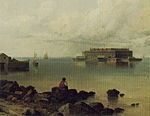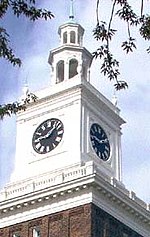Harbor Defenses of New York

The Harbor Defenses of New York was a United States Army Coast Artillery Corps harbor defense command. It coordinated the coast defenses of New York City from 1895 to 1950, beginning with the Endicott program, some of which were located in New Jersey. These included both coast artillery forts and underwater minefields. The command originated circa 1895 as an Artillery District(s) and became the Coast Defenses of Eastern New York and Coast Defenses of Southern New York in 1913. Circa 1915 the Coast Defenses of Sandy Hook separated from the latter command. In 1925 the commands were renamed as Harbor Defense Commands, and in 1935 the Harbor Defenses of Eastern New York was almost entirely disarmed, although possibly retaining the minefield capability. The New York and Sandy Hook commands and the Harbor Defenses of Long Island Sound were unified as the Harbor Defenses of New York on 9 May 1942.
Excerpt from the Wikipedia article Harbor Defenses of New York (License: CC BY-SA 3.0, Authors, Images).Harbor Defenses of New York
Sterling Drive, New York Brooklyn
Geographical coordinates (GPS) Address Website Nearby Places Show on map
Geographical coordinates (GPS)
| Latitude | Longitude |
|---|---|
| N 40.608611111111 ° | E -74.032222222222 ° |
Address
Fort Hamilton Community Club (Building 207)
Sterling Drive
11252 New York, Brooklyn
New York, United States
Open on Google Maps







